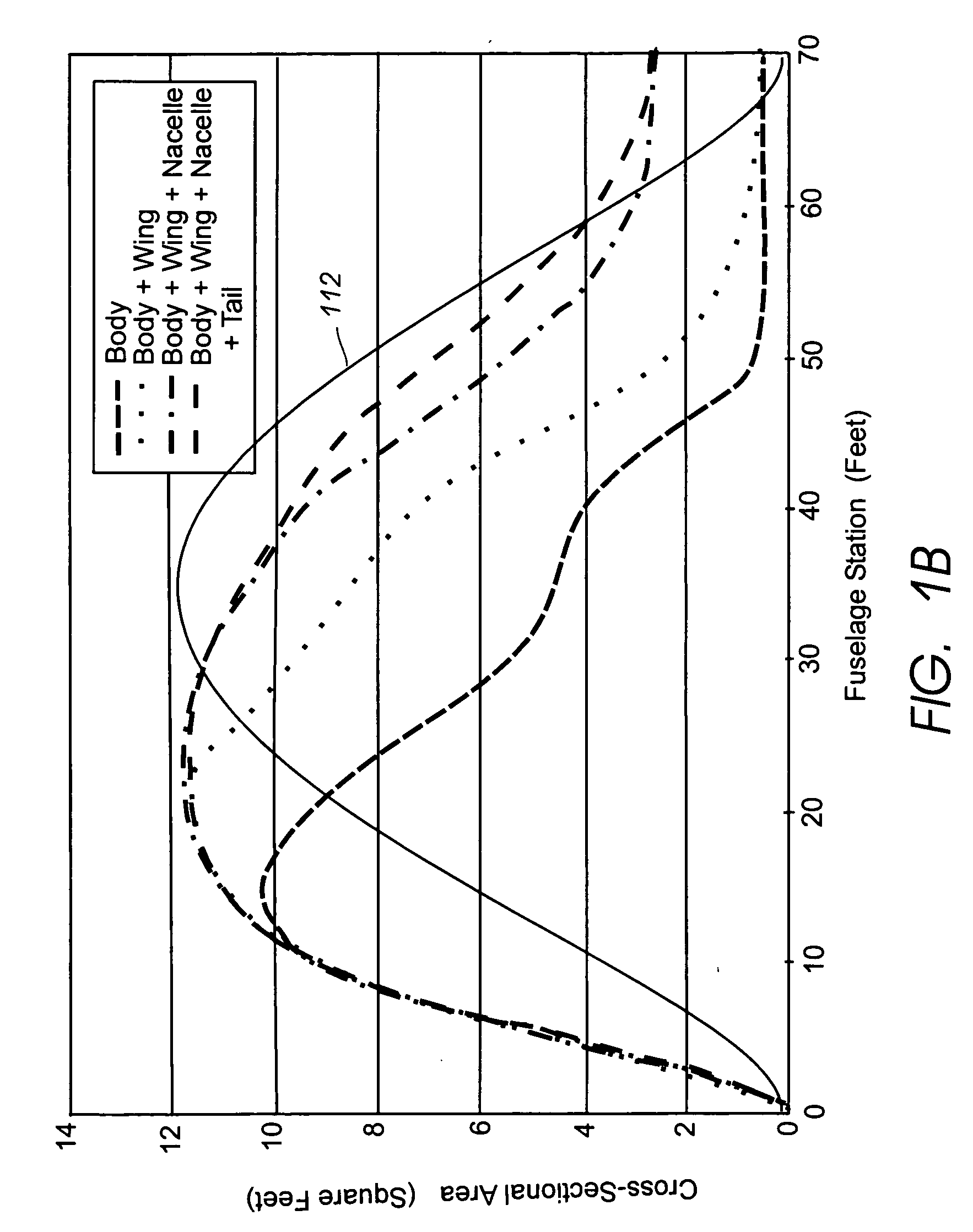Area ruling for vertical stabilizers
a vertical stabilizer and area ruling technology, applied in the direction of fuselage, wing adjustment, transportation and packaging, etc., can solve the problems of jet-powered fighters, limited subsonic flight, and designers who had no idea how to address this problem, so as to reduce the overall change rate of cross-sectional area of aircraft and reduce the wave drag of vehicles or devices.
- Summary
- Abstract
- Description
- Claims
- Application Information
AI Technical Summary
Benefits of technology
Problems solved by technology
Method used
Image
Examples
Embodiment Construction
[0024] Referring to FIGS. 1A through 1D, FIG. 1A is a top view of an embodiment of a rear portion of aircraft 100 including vertical fin 102 extending from strake 104, rear fuselage portion 106, inverted V-tail 108, and wings 110. While both the tip and root of vertical fin 102 are shown shaped according to area ruling concepts, in some embodiments, either the tip or root, but not both, of vertical fin 102 can be area ruled. Additionally, the area ruled shape of vertical fin 102 and strake 104 can include more than one “wasp-waist,” or reduced cross-sectional areas. Applying area ruling to aircraft 100, including vertical fin 102 and strake 104, helps reduce wave drag by reducing the rate of change in the aircraft's overall cross-sectional area, and minimizing the maximum cross-sectional area of the aircraft. Additionally, reducing the volume in the fuselage 106 in the vicinity of vertical fin 102, strake 104, inverted V-tail 108, and wings 110 facilitates application of area ruling...
PUM
 Login to View More
Login to View More Abstract
Description
Claims
Application Information
 Login to View More
Login to View More - R&D
- Intellectual Property
- Life Sciences
- Materials
- Tech Scout
- Unparalleled Data Quality
- Higher Quality Content
- 60% Fewer Hallucinations
Browse by: Latest US Patents, China's latest patents, Technical Efficacy Thesaurus, Application Domain, Technology Topic, Popular Technical Reports.
© 2025 PatSnap. All rights reserved.Legal|Privacy policy|Modern Slavery Act Transparency Statement|Sitemap|About US| Contact US: help@patsnap.com



